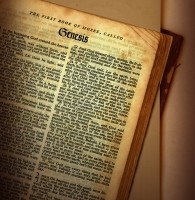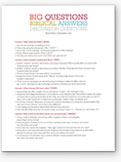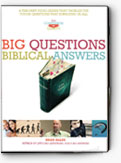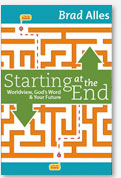
While God did inspire the original writers on what to write in the Bible, we do not have any of their original manuscripts in our possession today because the material that they wrote upon did not last. Some of these materials were: papyrus, which is split reeds laid at right angles and pressed into a paper; animal skins, often called parchment or vellum; and wax, clay, or stone tablets. Copies had to be made since the very nature of these materials would lead to their disintegration.
But this leads to another question: if we don’t have any originals around, how do we know that what we have today has been copied accurately? That’s a legitimate question!
To test the reliability of the Old and New Testament documents, researchers use what is called a bibliographical test. They are verifying the “writing of the book” by checking what we have today with what the earliest manuscripts say. For instance, some “versions” of the Old Testaments documents that researchers examine are the Septuagint (a Greek version), the Samaritan Pentateuch, the Masoretic Texts, and the Dead Sea Scrolls. An examination of the Dead Sea Scrolls, the oldest Hebrew version of the Old Testament we have which dates back to about 100 BC, reveals astonishing accuracy. For example, the Isaiah scroll is “word for word identical with our standard Hebrew Bible in more than 95 percent of the text. The 5 percent variation consisted chiefly of obvious slips of the pen and variations in spelling.” That is amazing! Since the writing material wouldn’t last, copyists of the text took painstaking steps to insure that what was transmitted was accurate. As a case in point, consider what strict regulations the Masoretes and others followed to avoid mistakes in copying: rules governed the kind of ink used, dictated the spacing of words, and prohibited writing anything from memory. The lines—and even the letters—were counted methodically. If a manuscript was found to contain even one mistake it was discarded and destroyed.
Imagine that—copying something and counting all the letters to make sure you copied it correctly! Now that’s dedication! But when you know it is God’s Word, you want to handle it with the utmost respect and care, since it is being passed on to future generations. In conclusion, Josh McDowell writes, “The thousands of Hebrew manuscripts, with their confirmation by the Septuagint and the Samaritan Pentateuch, and the numerous other cross-checks from outside and inside the text provide overwhelming support for the reliability of the Old Testament text…The Christian can take the whole Bible in his hand and say without fear or hesitation that he holds in it the true word of God, handed down without essential loss from generation to generation throughout the centuries.” Now that’s reliable!
Learn how to defend your Christian Faith

Big Questions Biblical Answers Supplemental Materials
by Brad Alles
- July 2025
- November 2024
- August 2024
- July 2024
- June 2024
- September 2022
- August 2022
- July 2022
- June 2022
- May 2022
- April 2022
- March 2022
- February 2022
- January 2022
- December 2021
- November 2021
- October 2021
- September 2021
- August 2021
- July 2021
- June 2021
- May 2021
- April 2021
- March 2021
- February 2021
- January 2021
- December 2020
- November 2020
- October 2020
- September 2020
- August 2020
- July 2020
- June 2020
- May 2020
- April 2020
- March 2020
- February 2020
- January 2020
- December 2019
- November 2019
- October 2019
- September 2019
- August 2019
- July 2019
- June 2019
- May 2019
- April 2019
- March 2019
- February 2019
- January 2019
- December 2018
- November 2018
- October 2018
- September 2018
- August 2018
- July 2018
- June 2018
- May 2018
- April 2018
- March 2018
- February 2018
- January 2018
- December 2017
- November 2017
- October 2017
- September 2017
- August 2017
- July 2017
- June 2017
- May 2017
- April 2017
- March 2017
- February 2017
- January 2017
- December 2016
- November 2016
- October 2016
- September 2016
- August 2016
- July 2016
- June 2016
- May 2016
- April 2016
- March 2016
- February 2016
- January 2016
- December 2015
- November 2015
- October 2015
- September 2015
- August 2015
- July 2015
- May 2015
- April 2015
- March 2015
- February 2015
- January 2015
- December 2014
- November 2014
- October 2014
- September 2014
- August 2014
- July 2014
- June 2014
- May 2014
- April 2014
- March 2014
- February 2014
- January 2014
- December 2013
- November 2013
- October 2013
- September 2013
- August 2013
- July 2013
- June 2013
- May 2013
- April 2013
- March 2013
- February 2013
- January 2013
- December 2012
- November 2012
- October 2012
- September 2012
- August 2012
- July 2012
- June 2012
- May 2012
- April 2012
- March 2012
- February 2012
- January 2012












Comments are closed.